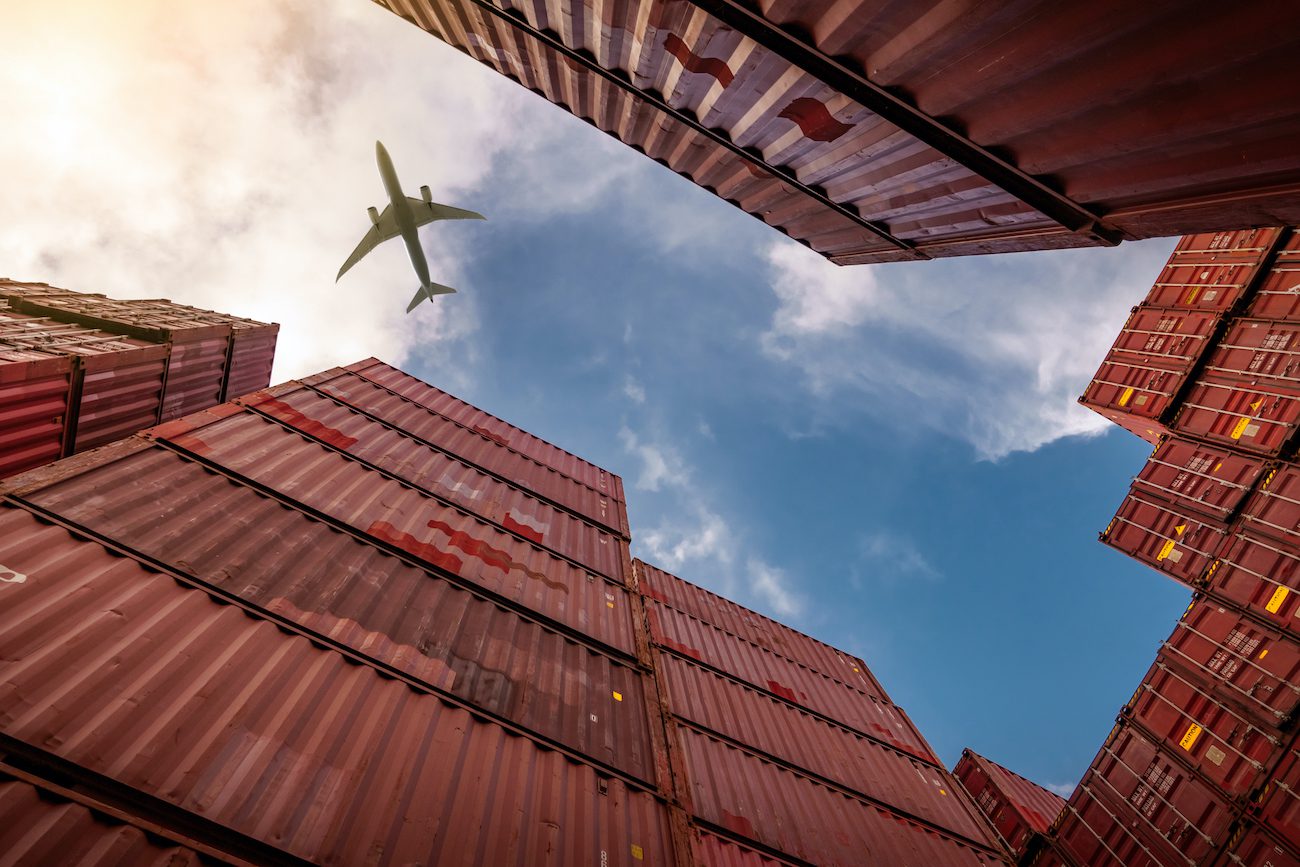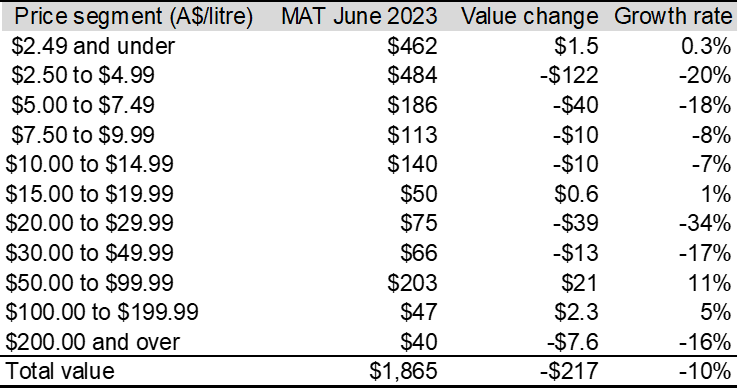
Australian wine exports declined by 10 percent in value to $1.87 billion and one percent in volume to 621 million litres in the year ended June 2023, according to Wine Australia’s latest Export Report released today.
The decline in value was largely driven by a reduction in exports to the United States as lower-priced packaged exports continued to decline. Exports to the United Kingdom also continued to decline, following the two years of elevated shipments due to pre-Brexit demand and Covid-19 related market impacts.
The latest export results are partially reflective of broader global trends reported by market research firm IWSR, with all wine consumption globally declining three percent in volume in 2022, but premium price segments bucking the trend with continued growth, albeit at slower rates than recent years.
Wine Australia Manager, Market Insights, Peter Bailey said that more than half of the decline in Australia’s export value took place in shipments with an average value between $2.50 to $4.99 per litre free on board (FOB), which are generally wines exported in their final packaging and sold in lower priced retail segments.
“Wine consumption in mature markets is in decline, driven by decreases in the commercial price segments. This is impacting Australia’s export performance, especially in the US, as Australia is very exposed to the price segments in decline,” Mr Bailey said.
In comparison to value, export volume was stable as a short-term, supply driven increase in unpackaged wine shipments, especially to Canada, was outweighed by declines in volume to many of Australia’s export destinations.
“The growth in unpackaged shipments comes as the shipping challenges of the past couple years have eased, allowing Australian exporters to catch up and ease pressure on inventory,” Mr Bailey said.

Figure 1. Exports by price segment (million AUD FOB).
The two diverging trends – the supply driven rise in unpackaged wine exports and the demand driven decline in packaged shipments as consumers in traditional markets turn away from wine in lower price segments – meant that exports with an average value below $5 per litre declined by 11 percent in value but increased by one percent in volume.
“The increase in unpackaged exports and the decline in packaged exports has resulted in the share of unpackaged exports growing by eight percentage points to a 69 percent volume share. This has an impact on the overall average value of exports, as unpackaged exports do not include packaging costs and are therefore inherently lower in value,” Mr Bailey said.
Exports above $5 per litre declined by 14 percent in volume and nine percent in value. The markets driving the decline in this segment were Singapore, the US, Canada and the UK – while growth to Hong Kong was able to offset part of this decline.
“According to IWSR, the value of global premium wine sales grew by two percent in 2022, a lower growth rate compared to recent years due to economic and inflationary pressures.
“Globally, consumers are cutting back on alcohol spending as prices rise for food and other necessities but are choosing to drink less often rather than trade down price segments.”
Australian wine was exported to 117 global destinations during the year, up from 112 in 2022. Sixty-six of these destinations recorded growth in the value of exports during the year, while 51 declined.
Exports to Europe and North America both declined during the year. Europe declined by 15 percent to $556 million, driven mostly by the UK, but 12 of the top 13 destinations in the region also declined in value.
North America declined by 14 percent to $525 million. Exports to Asia declined by four percent to $637 million. There were mixed results across the Asian region, including a decline in exports to Singapore and an increase in exports to Hong Kong, two key trading hubs in the region, reflecting unpredictable market conditions at present.
Key emerging markets such as Thailand, Philippines and Vietnam grew in value during the period.
The top five markets by value were:
- UK (down 14 percent to $364 million, 20 percent share of total export value);
- US (down 18 percent to $359 million, 19 percent share of total export value);
- Hong Kong (up 29 percent to $220 million, 12 percent share of total export value);
- Canada (down six percent to $163 million, 9 percent share of total export value); and
- Singapore (down 24 percent to $128 million, seven percent share of total export value).
The top five markets by volume were:
- UK (down three percent to 220 million litres, 35 percent share of total export volume);
- US (down three percent to 135 million litres, 22 percent share of total export volume);
- Canada (up 43 percent to 77 million litres, 12 percent share of total export volume);
- New Zealand (down three percent to 31 million litres, five percent share of total export volume); and
- Germany (down 12 percent to 28 million litres, five percent share of total export volume).
Related content













Recent Comments